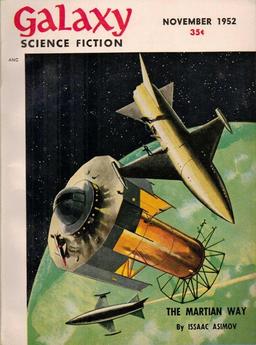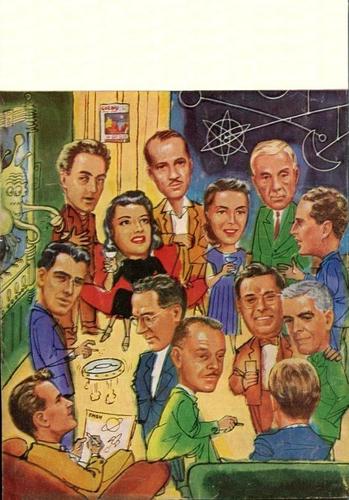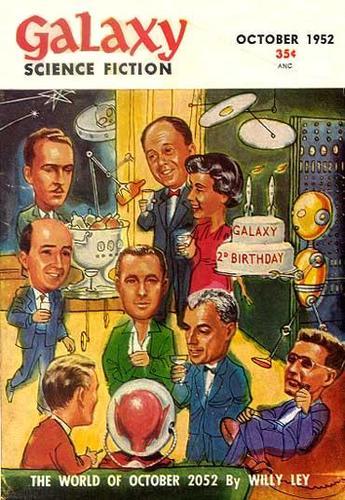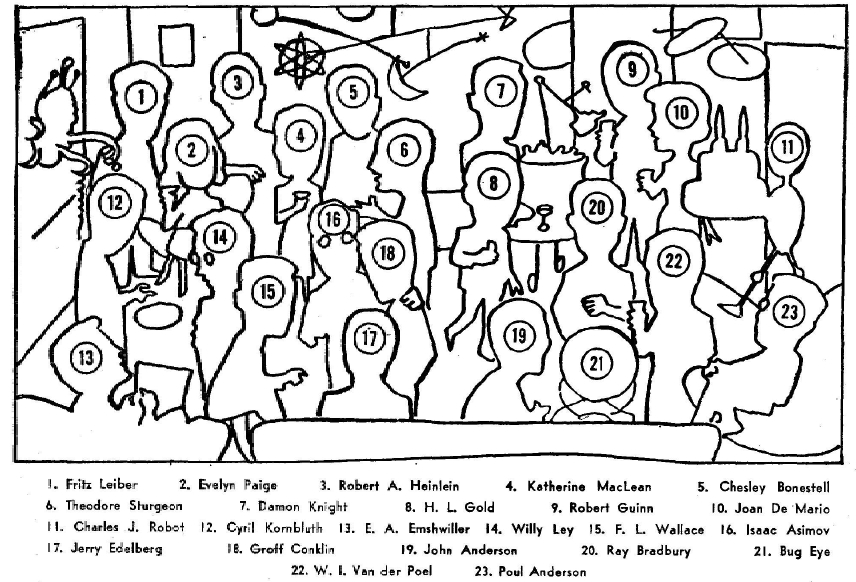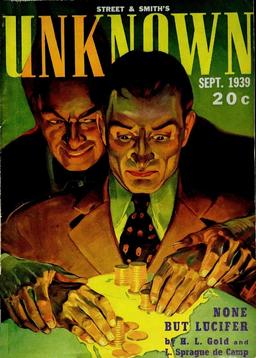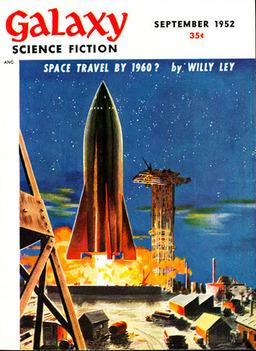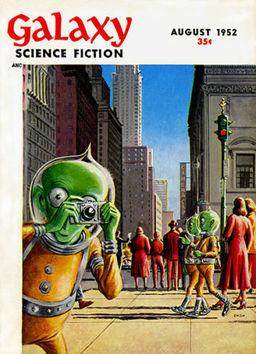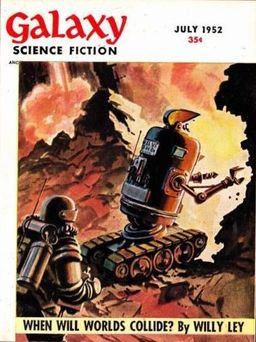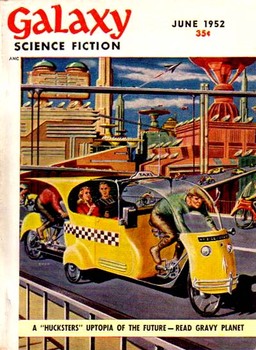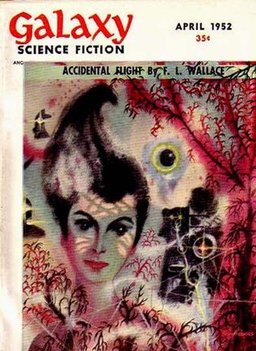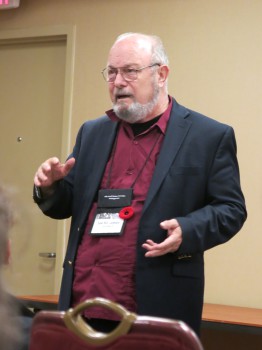Galaxy Science Fiction, December 1952: A Retro-Review
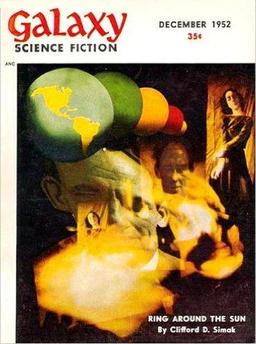 The cover of the December, 1952 issue of Galaxy Science Fiction was creating using a technique called “Camerage.” Editor H. L. Gold describes it as
The cover of the December, 1952 issue of Galaxy Science Fiction was creating using a technique called “Camerage.” Editor H. L. Gold describes it as
A three-dimensional montage effect — but it’s not a montage… All the objects in the picture are assembled at one time, illuminated by projected colored lights… and are shot by a number of cameras placed on different planes.
To me, it looks a little odd — or at least this particular use of the technique looks a little odd. (Click the image at right for a bigger version.) Seeing an image online doesn’t quite match up with what you see on an actual copy of the magazine; I can’t quite explain the difference. But however you view it, the cover still doesn’t connect with me.
Ring Around the Sun (Part 1) by Clifford D. Simak — It started with a few inventions — a cigarette lighter, a razor blade, and a light bulb. These items would last forever, the manufacturers claimed. Additionally, another group supplied synthetic carbohydrates for consumption, helping humanity’s food supply. Each had its own effect on the economy, in both subtle and obvious ways.
Jay Vickers learns of the newest arrivals — the forever car and the forever house — with indifference. He doesn’t need a new car and doesn’t like the idea of a new house, no matter how reasonable the financing may be, even if it seems like they’re being given away.
